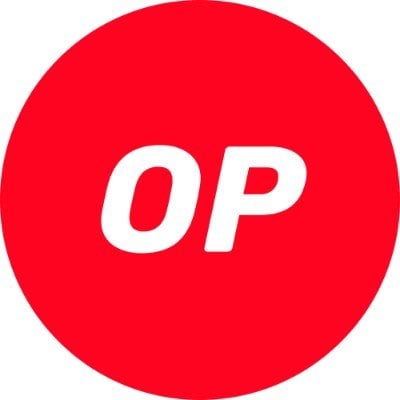Layer2 classification, the road to generalization is still long
Written by: Spike @ Contributor of PermaDAO
Reviewed by: Kyle @ Contributor of PermaDAO
Introduction
After multiple delays, Ethereum has finally completed the Shanghai upgrade, and the staking system of Ethereum has truly begun to operate. The next step for Ethereum has arrived in the Cancun era. Among the many EIPs in this upgrade, EIP-4844 is undoubtedly the most noteworthy, as it will guide Ethereum into the first step of DankSharding, Proto-DankSharding, preparing for subsequent comprehensive innovations.

After the Shanghai upgrade, various L2 and DeFi protocols have benefited, but at the same time, the progress of various L2s has faced numerous issues, not entirely satisfactory. In the upcoming Cancun upgrade competition, a group of L2s will inevitably occupy more mainstream market space.
- The next upgrade phases for Ethereum are "The Surge" and "The Scourge," aiming to achieve over 100,000 TPS in Rollups and to avoid centralization and other risks brought by MEV.
- The Shanghai upgrade will address three key issues for Ethereum, including fundamental changes to EVM functionality, the withdrawal of staked ETH on the beacon chain, and a reduction in Layer 2 gas fees.

- Once the Cancun upgrade's EIP-4844 is implemented, it will introduce the Blob mechanism. In simple terms, it will separate the current Ethereum mainnet data storage mechanism into Blobs, which will not be permanently stored but deleted after about a month to save precious on-chain space, thus significantly improving the data availability for various L2s.
Based on existing mainstream L2 market data, as various L2s become increasingly practical, we categorize them into three types:
- Classic L2, which relies on itself for profitability.
- Customized L2, which is both an L2 and a specific product.
- RaaS: primarily provides L2 launch services.
Among them, Classic L2 mainly relies on the protocol fee difference between L2 and L1 for profitability, which is its primary profit model, and whether or not to issue tokens does not change the essential logic of this profit model. The leading products like GMX and the issuance of tokens are the key factors driving the increase in usage.
Customized L2, such as IMX, is based on the following logic: it is a customized L2 chain but also a standalone product type;
Finally, RaaS, with OP Stack and Orbit as the main players. Its logic lies in the complete decoupling of Ethereum and L2, leading to an increasing number of dApps needing to launch their own chains, while L2 can provide its own autonomy without losing the security of the mainnet.
The most typical users of RaaS are opBNB and Base, both developed based on OP Stack, backed by centralized exchanges like Binance and Coinbase. After the collapse of the centralized exchange and public chain model of FTX and Solana, exchanges launching their own L2 chains not only avoid regulatory issues but also leverage Ethereum's traffic, making it a reasonable middle path.
Classic L2: The Path of Open Source and Thrift
Returning to the zkSync Era ecosystem, let's look at the data on Dune. In September, when Arbitrum just launched, the staking value of ETH was 370,000, while zkSync Era currently has a maximum staking amount of 3,894.
The current situation of zkSync Era is that there are many applications in the ecosystem, but very few can be considered mainstream and high-quality. Relying solely on over $400 million in funding cannot support its future development; it still needs some quality applications to back it up, and indeed many projects are poised to launch. For DeFi, we might expect the next step of Uniswap launching on zkSync.
SyncSwap still has a long way to go compared to Arbitrum's GMX, and currently, most of the trading data comes from addresses interacting with zkSync Era airdrops. Of course, airdrop interaction data is also the source of data for most DeFi protocols, but for SyncSwap, being the sole player and starting to arbitrarily change some rules indicates a casual attitude towards users. SyncSwap's loyalty program also reflects that the project is starting to expand.
Not specifically distinguishing between ZK or OP systems, we mainly categorize these products based on business models, as these products achieve "overtaking on curves" by building their own super dApps.
For example, GMX runs fast, relying on the engine. Although the tokens of various L2s do not generate actual value, the allure of airdrops significantly boosts user interaction.
Pay enough for L1, leave enough for dApps, and the rest is all yours.
- Open Source: The more dApps and users, the better. Essentially, L2 is also a variant of traffic and platform economy, just sharing profits from Ethereum in the name of "decentralization."
- Thrift: Through the decentralized cycles of key components like delayed sorters and the expected savings under EIP-4844, L2 fees have become sufficiently low.

Application L2: The Lifelong Rival of AppChain
Application L2 can be a customized product of general L2 or a client of RaaS. In the early days, dYdX was a major client of StarkEx, and in the future, more applications will choose to build their own L2.
RaaS: Expands the business from the perspective of L2 itself, providing a more streamlined L2 launch platform;
Application L2: Seeks available L2 from the perspective of specific dApps, focusing on improving its application performance;
The logic of application L2 is that it needs to retain most of the profits and does not want to share transaction fees or gas fees with L2. The prerequisite for achieving this is that its own moat must be deep enough for users to be willing to stay on the dApp for a specific scenario or service.
In the early days, dYdX (StarkEx, 2021) had one-time development "processing fees" and ongoing profit-sharing with continuous technical services.
Now, Base (OP Stack, 2023) is itself Layer 2, but also a customized application-type L2, which is a product of a different era compared to OP's fully self-developed system.
Similar to the difference between virtual machines and containers, it depends on whether it directly carries dApps or continues to build an environment for dApps. dYdX is built directly on StarkEx, only needing to consider configurations with StarkEx, while Base continues to abstract different virtual machine subsystems for higher-level applications to call resources.

RaaS: The Rising Star
RaaS can profit from the B-end, providing enterprise-level customized services, while application L2 needs to consider whether it can be profitable. Base, backed by exchanges, can direct its traffic into it, while more complex DeFi products find it challenging to build their own L2, often existing in a multi-chain deployment model.
- Ethereum is the "only" settlement layer and data availability layer;
- Any dApp should use its own Layer 2 or Layer 3 services;
- Seeking existing shelf products is more cost-effective than self-development;

One can easily imagine that as the foundational components mature in the future, more institutions and projects will choose to issue their own L3 networks, such as governments or traditional financial institutions, which can meet compliance and regulatory needs while sharing all the infrastructure of the strongest Ethereum ecosystem.
Especially for concepts like RWA, which are currently adapted based on the Ethereum public chain, in the future, they will gradually migrate to Rollup, and B-end customized services will usher in an explosive period.
General L2: SCP Theory and everPay Practice
Outside of various Ethereum ecosystems, there are two other types of products in the market that serve similar functions to L2, namely cross-chain bridges and general L2. The role of cross-chain bridges is to connect various public chains, and if the funds they accumulate are broad enough, the cross-chain bridge itself can also combine sufficient liquidity. From this perspective, cross-chain bridges are also a type of L2.
The other paradigm is the general L2 everPay, which is built on the Arweave storage public chain. Leveraging the SCP (Storage-based Consensus Paradigm) theory, it combines transactions and liquidity on-chain, and permanently stores the results on Arweave. Thanks to Arweave's permanent storage feature, the SCP paradigm not only eliminates concerns about scalability but also allows any transaction results to be permanently stored without adopting a time-limited storage mechanism.
The real-time financial protocol everPay has been launched, providing users with a payment settlement experience close to Web2 while ensuring trustworthiness, and it is not limited to EVM ecosystem public chains. Any public chain can interface with everPay, fully decoupling the transaction experience from the traditional financial system.
One can understand everPay as an L0-level payment protocol, while it can also be defined as a general L2 and cross-chain bridge, on which ecosystems can be further built, such as the cross-chain real-time decentralized exchange network PermaSwap and revenue-sharing NFT auction systems, all based on the everPay protocol dApps.
Currently, everPay features 0 Gas and near-instant payment speeds. It is not an exaggeration to say that everPay is the ideal paradigm of a centralized trading experience combined with secure and trustworthy decentralized technology, with all transaction data permanently stored in the Arweave permanent storage protocol.
Currently, Arweave is processing nearly four times the transaction volume of the end of 2022, but 99% of the fees are still used to pay for storage costs. Regardless of how much it grows, there is no need to change the mechanism design, meaning that an increase in transaction volume will not cause fluctuations in gas fees, which fundamentally squeezes the survival space of MEV, with sorting and packaging operating entirely based on decentralized native mechanisms. As Arweave's founder Sam puts it, "Arweave will never raise gas fees; the Arweave network aims to be an on-chain data source that never goes down!"
In terms of supported currencies, everPay can support not only ERC-20 tokens but also Arweave's native PST (Profit Sharing Token) format, and even issue native tokens. For example, everPay has collaborated with Asian digital banks to issue offshore RMB stablecoin ACNH, which has already seen approximately 500,000 ACNH participate in trading after being listed on Permaswap.
Conclusion
Examining Rollup types, starting from the most well-known L2 products like Arb/zksync/OP, we delve deeper into the more grand RaaS, similar to the flourishing of all things in the public chain era. However, various L2s resemble an internal war of Ethereum, with the ultimate winner still being the Ethereum ecosystem.
At the same time, the demand for products like dYdX has not received enough attention. If RaaS is to truly develop, its user base is clearly more important, which is the basic premise for discussing its profit model. Unlike specific products like wallets, RaaS does not possess personal use value.
Unlike the network effects of L2, a single super dApp finds it difficult to grow independently to meet public chain-level demands and operational costs, while Base represents the first large-scale attempt after exchanges entered the public chain track.
After Ethereum's Shanghai upgrade, the fragmentation of liquidity in the L2 ecosystem has become increasingly prominent, and the interoperability between L2s is becoming more important. Unified cross-chain products and protocols between L2 chains are still worth looking forward to, whether they will be built as RaaS products or by suites like Cosmos remains to be seen.















